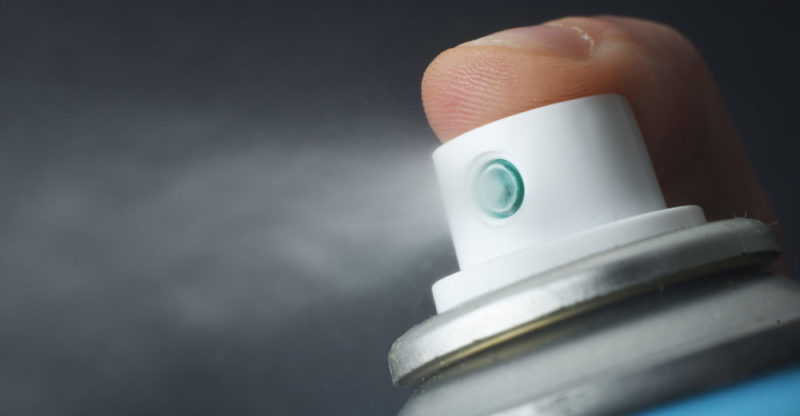We explain what halogens are and the properties of these elements. Also, what are its characteristics, uses and examples.
What are halogens?
Halogens are the six chemical elements found in group 17 (VIIA) of the periodic table . They exhibit similar chemical behaviors, such as forming very similar sodium (Na) salts . Hence its name, which comes from the Greek words hals - ("sales") and genes ("origin").
Halogens have been used since ancient times by humans , even before possessing a deep chemical knowledge that would allow us to distinguish or study them better. They were used mainly in the form of salts, which the ancient Phoenicians and Greeks used as a method of preserving food (brine).
What chemical elements are halogens?
The halogen elements are six:
- Fluorine (F)
- Chlorine (Cl)
- Bromine (Br)
- Iodine (I)
- Astat (At)
- Tenese (Ts)
Physical properties of halogens
Halogens are a diverse group and can be found at room temperature and pressure in all three states of matter :
- Gaseous . Fluorine and chlorine.
- Liquid . Bromine.
- Solid . Iodine and astate.
Chemical properties of halogens
Halogens are highly reactive , so they are never found in their monatomic form, but rather as part of other compounds . At most they can be found by forming diatomic molecules of the same element. For example: F 2 , Cl 2 , Br 2, and I 2 .Halogens form monovalent ions (-1), that is, they need an electron to complete their last energy level . Therefore, they are all oxidizing elements. Likewise, its electronegativity is 2.5 on the Pauling scale (or less). Fluorine is the most electronegative.
What are halogens used for?
 Halogens are used on numerous occasions, such as in the form of edible salts or tinctures for medical use . They are involved in the manufacture of lamps, bleaches and detergents. They are used in the treatment of drinking water and swimming pool water (especially chlorine).
Halogens are used on numerous occasions, such as in the form of edible salts or tinctures for medical use . They are involved in the manufacture of lamps, bleaches and detergents. They are used in the treatment of drinking water and swimming pool water (especially chlorine).Bromine compounds (bromides) are used as sedatives and as a material for the photographic industry . Iodine is used as an antiseptic. Fluorine, for its part, is used to make antifreeze, lubricants and Teflon resins.
Halogen abundance
Of all halogens, fluorine and chlorine are the most abundant in nature (corresponding to 0.065% and 0.055% respectively). Due to their great reactivity, they are always part of other compounds.The largest deposits of chlorine on the planet are dissolved in the waters of the oceans , in the form of sea salt (NaCl). Bromine is also found there, although in much smaller quantities .
Iodine is found fixed in the tissues of shellfish and fish . Asstate, being a short-lived radioactive material, is almost never found. Tenese exists only in laboratories, as it is a synthetic element.
Halogen toxicity
 Halogens are very reactive , which represents a danger for the human body , since when they enter an organism they displace other elements or form poisonous or toxic compounds inside.
Halogens are very reactive , which represents a danger for the human body , since when they enter an organism they displace other elements or form poisonous or toxic compounds inside.
- Chlorine . It has been used to make disinfectants and pesticides, given its lethal power. In addition, it was part of the elements used in the manufacture of toxic gases for war purposes (such as Zyklon B used by the Nazis ).
- Fluorine . It is considered excessively toxic, due to its enormous electronegativity. It is lethal in just minutes in very low concentrations (0.1%).
- Bromine . It is relatively less toxic than these two elements. An amount of 100 mg of Br is sufficient to cause death.
- Iodine . Although it is essential for the functioning of the body, it is lethal if 3 grams are consumed directly.
- The astatine . It is radioactive and, therefore, it is a hazardous material for health in any presentation.
Chemical compounds containing halogens

- Hydrogen halides . Hydrogen halides (HX) are binary compounds that contain one halogen atom and one hydrogen atom . They are irritating gases at room temperature and have a strong odor. For example: hydrogen chloride (HCl (aq) ) and hydrogen bromide (HBr (g) ).
- Metal halides . Metal halides are compounds that contain at least one halogen atom and at least one metal atom. For example: sodium chloride (NaCl) and calcium fluoride (CaF 2 ).
Pseudohalogens

Pseudohalogens (false halogens) are binary inorganic compounds that exhibit behavior similar to halogens, without necessarily having halogen atoms . The ions of these compounds are called pseudohalides, using halides as references. Some examples of pseudohalides are cyanide (CN - ), thiocyanate (SCN - ) or fulminate (CNO - ). On the other hand, cyanogen iodide (CNI) and cyanogen chloride (CNCl) are examples of pseudohalogens. Not all possible combinations of pseudohalogens are stable.
Tenese (element 117)
Tenese or ununseptium, represented by the symbol Ts or Uus (provisional name) , is a heavy synthetic element with atomic number 117. It was discovered in 2010 at the Central Institute for Nuclear Research in Dubná, Russia.
In general, some properties of tenese follow the behavior of those of its groupmates (halogens). Thus, its melting point, boiling point, and first ionization energy behave periodically. However, since its most stable isotope ( 294 Ts) has a half-life of just 78 milliseconds, not much can be verified.
It is important to note that it would differ from the halogen group in other respects . For example, in its ability to form covalent bonds or its tendency to acquire a positive rather than a negative oxidation state.
Examples of everyday substances with halogens

Some known substances composed of halogens are:
- Table salt or common salt (NaCl) . It is edible and is used to salt food.
- Silver bromide (AgBr) . It is used in photography for its photosensitivity.
- Calcium fluoride (CaF2) . It is used in the processing of iron and steel in metallurgy.
- Chlorofluorocarbons or CFCs . They are a family of gases formerly used in refrigeration and as aerosol propellants.
Luke is passionate about fostering student involvement and connection. He studied psychology for his major and likes learning about the past. Luke aims to specialize in artificial intelligence and cybersecurity. .
Leave a reply
Your email address will not be published. Required fields are marked *Recent post

Sport: What Is It, Types, Risks, Features, Characteristics and Examples

Dogs: Emergence, Features, Characteristics, Feeding and Breeds

Story: Definition, Elements, Structure, Features and Characteristics

